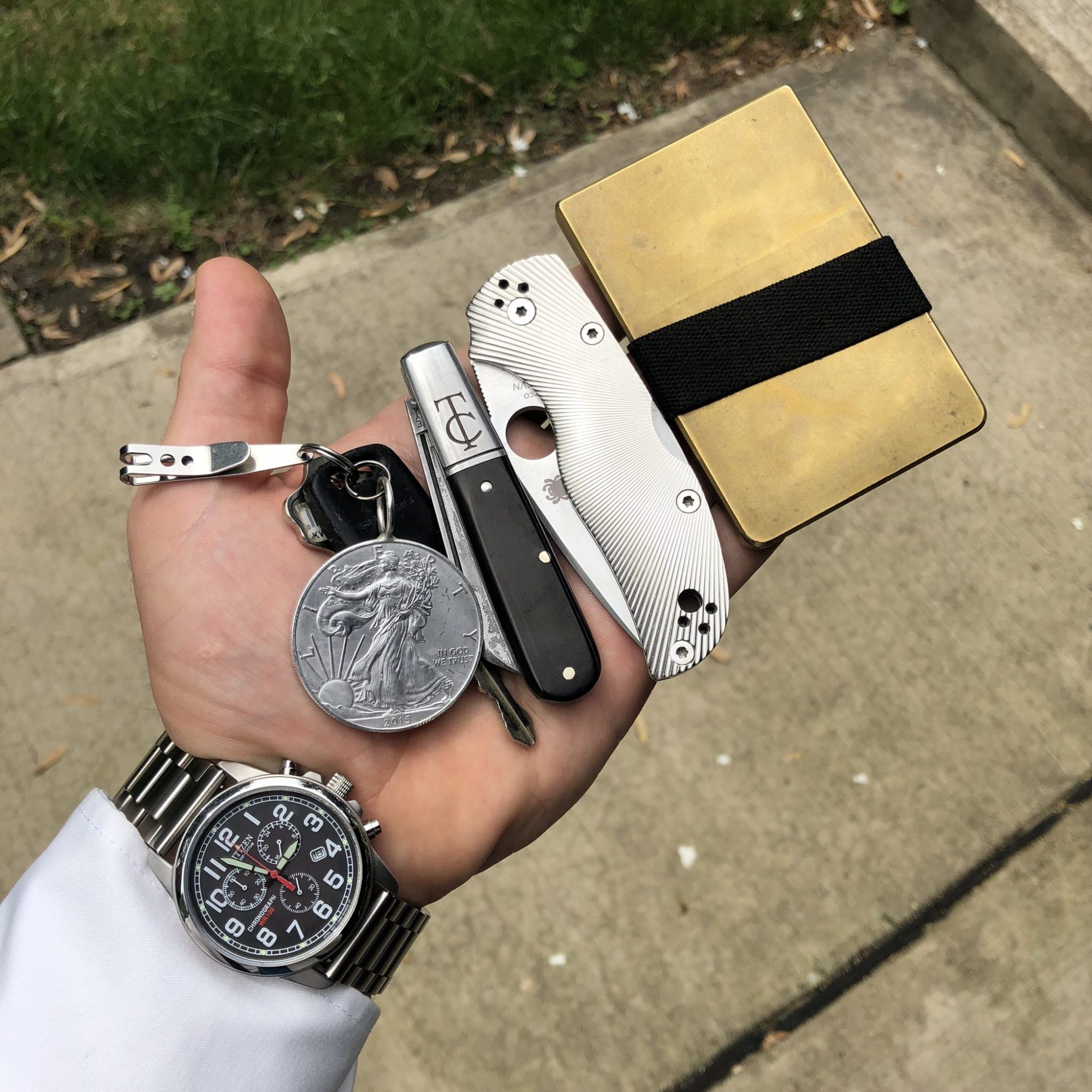Glitter Gold handles tend to illicit one of two reactions from people; “I love it” or “That’s awful”. They’re eye catching in a way that some enjoy and others can’t stand, but they have a surprisingly longstanding place in the history of pocketknives.
First off, synthetic materials have been used for knife handle covers for longer than you might imagine. The first synthetic (or plastic like) replacements for wood, bone, ivory, etc. began being introduced in the late 19th century. By the beginning of the 20th century, when American knife manufacturing was coming into its own and outgrowing its predecessors in Solingen and Sheffield, companies like Case were offering knives handled in various colors of celluloid. Celluloid is another name for Parkesine, one of the first of the synthetic handle materials. Celluloid was used extensively by the knife industry, but now has become known for its flamability and tendency to oxidize and ruin carbon steel knives. However, one of the types of celluloid that was first used, as early as the 1920’s and definitely before 1940, was a type layered with gold glitter that became known as Goldstone.

This type of handle cover with a faux gold look is one that has been done in many ways by many companies. Interestingly, a 1935 article in Popular Science even provided directions on how to make your own glitter gold (or goldstone) celluloid covers for your pocket knife, so it must have been a popular type of handle. In the past companies like Winchester, Western, and Queen have also made knives with glitter handles. When Jim Parker took over Case he had some collector sets produced in Goldstone. Unfortunately, many of those covers went on to curl and deform, which may have soured some on the handle material. Recently, Rough Ryder produced a series of knives with covers consisting of gold flake in clear acrylic, which I would include in this type of handle. Case is currently producing knives with a silver glitter handle cover that they call Stardust Kirinite. So this flashy type of cover has been on many pocket knives from various companies over long decades.

Great Eastern Cutlery has also made their own version of knives with glitter gold handles. GEC’s versions are made with acrylic rather than celluloid. Acrylic is a very stable material, with none of the major issues that come with celluloid like flamability and outgassing. That said, in my experience, acrylics can shrink and swell depending on the conditions in which they’re kept. Thankfully, however, I have not experienced any such issues with the Glitter Gold acrylic.

In 2011 GEC created the Good as Gold series. There used to be a page on their site about the series, but it seems to have been taken down. In fact, it looks to me like they are moving away from the idea of having distinct series of knives, outside of their normal brands, although they continue to make the Beaver Tail and Banana knives. Interestingly, at least one knife was made with the Good as Gold tube label but without Glitter Gold Acrylic handles, and you can find an article on that knife at this link. They made a pretty good number of patterns with the Glitter Gold covers that year: #23 Square End Jumbo Trapper, #48 Slim Trapper, #56 Dogleg Jack, #62 Easy Pocket Congress, #65 Ben Hogan, and #66 Moose. Since then, as far as I can tell and check against the (unofficial but extremely helpful) GEC database created by Darren Orrell, the only knives they’ve made with Glitter Gold Acrylic handles were Special Factory Assembly models made for the 2018 Rendezvous. These consisted of two versions of the #78 American Jack, 8 made of each, a single spear bladed version and a spear and pen two bladed version. So, although they made knives with Glitter Gold handles in several patterns in 2011, overall it is a relatively obscure series for GEC.

Great Eastern Cutlery sourced their Glitter Gold Acrylic, I believe, from Masecraft Supply. Masecraft Supply seems to be out of the material. EDIT: Bill Howard let me know that GEC’s glitter gold was sourced not from Masecraft, but from Galaxy Plastic. I was told that the Glitter Gold Acrylic GEC has on hand is the last of their supply, and when it’s gone it’s gone for good. With that in mind, and considering that GEC has only made 16 knives in Glitter Gold Acrylic since 2011, if you find one available for sale I suggest picking it up if it fits your budget. They sometimes go for surprisingly low prices, even staying close to original retail. I always have one eye out for them!

I like a little flashiness in my knives, even to the point of garishness, but I know not all do. However, if you’re a fan of traditional knives then you probably appreciate their history. Glitter gold type synthetic handles have a long and interesting history starting in the early days of the American knife industry. As I talked about in another article, knives have always been appreciated for their aesthetics. Some people just like to go bold and bright, and glitter gold is the perfect solution!

I sincerely thank you for your time, support, and interest! Don’t forget to tell your friends about KnifeThoughts.com, subscribe via email, and share this article on social media. You can find Knife Thoughts on YouTube where I have hundreds of knife videos, as well as on Instagram and Facebook! You can find all my latest links at LinkTr.ee/KnifeThoughts






















